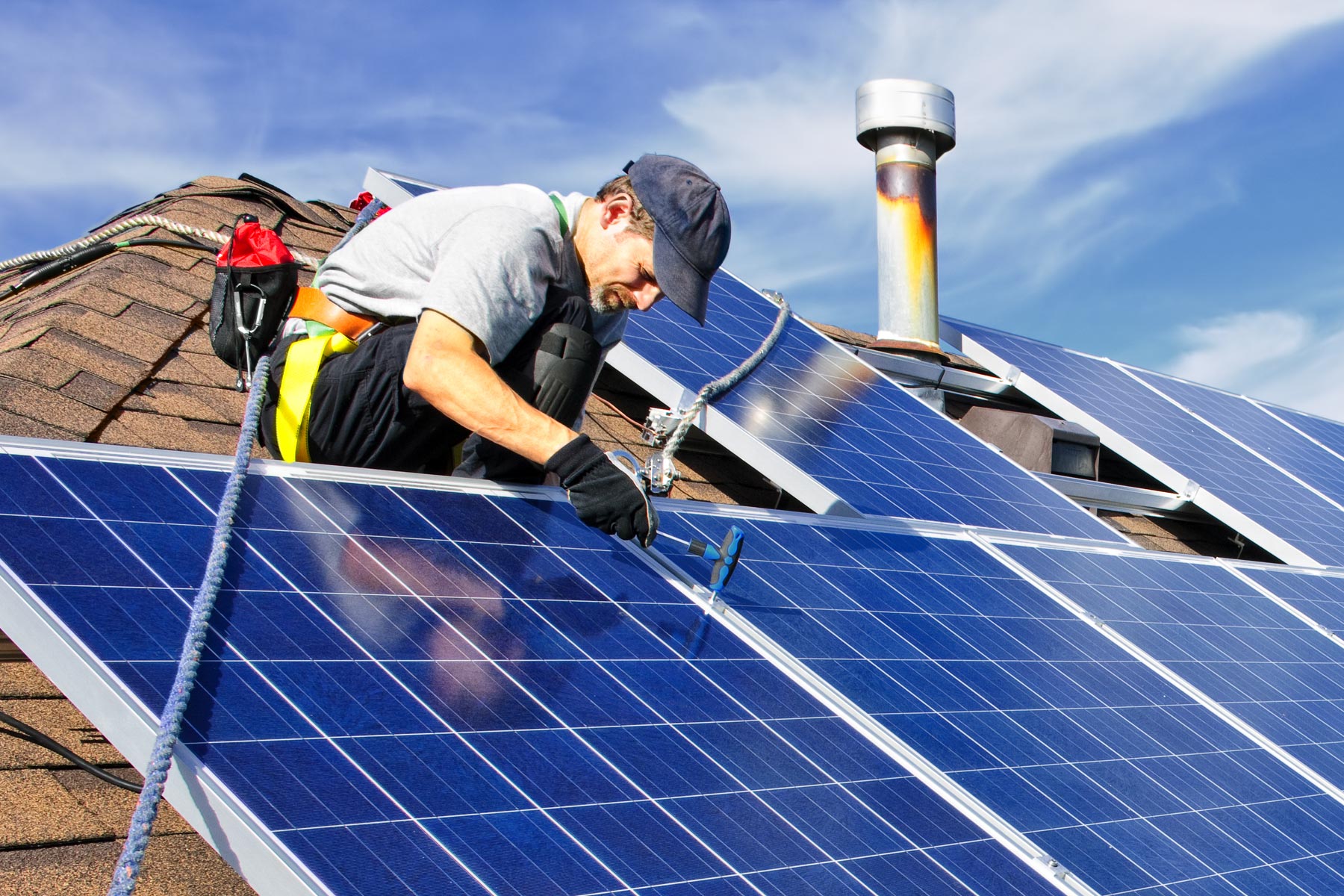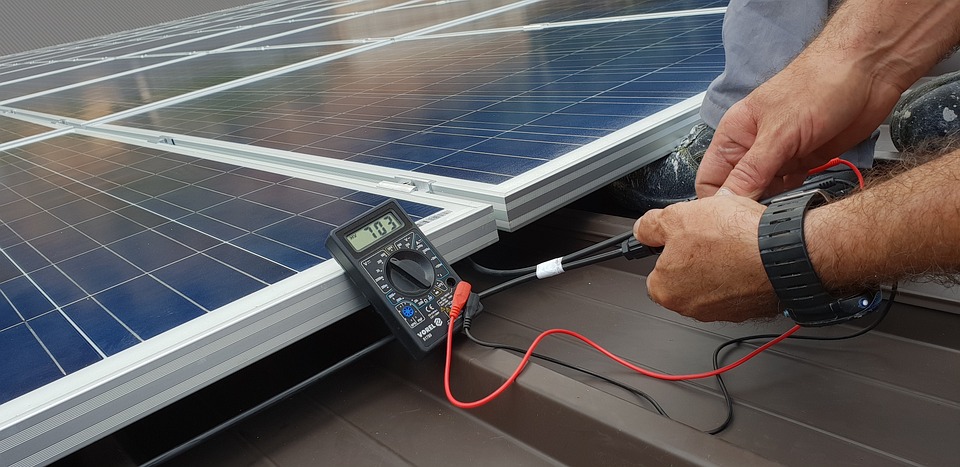Top Rated Solar Panels: Renewable Energy Systems Harness Sunlight To Generate Clean Electrical Energy For Residences And Services
History and Advancement of Solar Panels
Have you ever stopped to wonder how a simple piece of technology turned sunlight into electrical energy? The journey of photovoltaic panels is absolutely nothing brief of a modern-day epic, woven with minutes of interest, development, and a dash of serendipity. It was back in 1839 when Edmond Becquerel, a young French physicist, observed that certain materials produced little electrical currents when exposed to light. This discovery planted the seed for what would ultimately end up being the photovoltaic transformation.
Early Milestones in Solar Innovation
- 1876: William Grylls Adams and his student Richard Evans Day showed that selenium could produce electrical power from light, a precursor to modern solar cells.
- 1954: Bell Laboratories revealed the first useful silicon solar battery, which converted sunlight to electricity at about 6% performance.
- 1960s: Solar panels found a specific niche in powering satellites, proving their worth in area expedition.
Isn't it remarkable how something created for orbit eventually discovered its way to rooftops worldwide? The trajectory of photovoltaic panels from experimental curiosities to trustworthy energy sources mirrors the broader dance of human ingenuity and ecological awareness.
Key Developments That Shaped Solar Panels
| Year | Development | Impact |
|---|---|---|
| 1970s | Thin-film solar cells introduced | Decreased material expenses, increased flexibility |
| 1980s | Improvements in silicon purity | Increased effectiveness and lifespan |
| 2000s | Advancement of multi-junction cells | Enhanced energy conversion rates significantly |
Show for a moment: how did these incremental improvements modify the landscape of renewable resource? By continuously pushing boundaries, solar technology transformed from a specific niche innovation into a worldwide powerhouse. The performance and cost of solar panels surged, sparking a wave of adoption that seemed difficult just a few decades before.
Personal Insight: A Sunlit Surprise
I remember going to a small rural town where the installation of solar panels triggered an extensive modification. Children studied under bright LED lights powered completely by the sun. It struck me-- this technology didn't just transform photons; it transformed hope into concrete progress. Isn't that the ultimate power of solar power?
In the grand tapestry of energy history, photovoltaic panels stand apart as a beacon-- a testimony to human willpower and the relentless pursuit of cleaner, sustainable futures. From the curious experiments of 19th-century researchers to the smooth, effective ranges we see today, the story of solar panels reminds us that often, the brightest concepts begin with a simple ray of light.
Revealing the Spectrum: Types of Photovoltaic Panel Technologies
Ever wondered why some solar panels gleam like glass while others look like dark, matte tiles? The secret lies deep in their innovation. From crystalline silicon to thin films, photovoltaic panels come in a range of designs, each with its quirks and effectiveness.
Crystalline Silicon Panels: The Workhorse of Solar
Monocrystalline and polycrystalline panels control the landscape. Monocrystalline, fashioned from a single silicon crystal, uses the greatest efficiency rates-- in some cases surpassing 22%. But this comes at an expense: their manufacturing process is energy-intensive. Polycrystalline panels, on the other hand, are made from numerous silicon pieces melted together. They sport a particular speckled blue shade and generally fall a little behind in performance, hovering around 15-17%. They typically cost less upfront.
Think of setting up a monocrystalline range on your rooftop; the smooth black panels take in the sun's rays like a sponge. What if your roof's shape or shading isn't perfect? Polycrystalline panels might manage partial shading much better, a subtlety typically neglected.
Thin-Film Solar Panels: Flexibility Fulfills Innovation
Thin-film innovation leaves from the bulky silicon wafers and rather layers photovoltaic product on substrates like glass, plastic, or metal. Cadmium telluride (CdTe) and copper indium gallium selenide (CIGS) are popular thin-film materials using lightweight and versatile alternatives.
- Thin-film panels tend to perform better in low-light or high-temperature environments.
- They're less effective general-- typically around 10-12%-- however their adaptability can be a game-changer for unconventional setups.
- Due to the fact that they're lighter, they're sometimes chosen for roofs not able to support heavy loads.
Emerging Technologies and the Roadway Ahead

Perovskite solar cells, often hailed as the next big leap, have stirred enjoyment for their prospective to reach performances similar to silicon panels but at a fraction of the expense. Yet, their durability remains under analysis, akin to an appealing novel whose ending is still unwritten.
Have you ever faced the frustration of your solar output dipping all of a sudden? In some cases, the culprit isn't dirt or shading but the panel's fundamental reaction to temperature level variations. Crystalline silicon panels tend to lose performance as temperature levels soar, frequently by about 0.5% per degree Celsius above 25 ° C. Professional Tips for Selecting the Right Innovation
- Examine your environment: Is your area vulnerable to high heat or frequent cloud cover? Thin-film panels might outshine silicon in these conditions.
- Think about setup restrictions: Restricted roof area? Monocrystalline panels pack more power per square foot.
- Examine long-lasting toughness: Silicon panels have decades of tested dependability, while brand-new technologies like perovskite are still showing their mettle.
- Consider visual appeals and integration: Some homeowners value the sleek black appearance of monocrystalline panels, while others prefer the less obtrusive thin-film options.
| Innovation | Common Effectiveness | Strengths | Factors to consider |
|---|---|---|---|
| Monocrystalline Silicon | 20-22% | High effectiveness, streamlined look | Greater production energy, expense |
| Polycrystalline Silicon | 15-17% | Lower cost, simpler production | Less efficient, blue speckled look |
| Thin-Film (CdTe, CIGS) | 10-12% | Lightweight, flexible, good in shade | Lower performance, shorter life-span |
| Perovskite (Emerging) | 15-20% (lab scale) | Possibly low expense, high performance | Stability and durability issues |
Setup: The Unsung Hero of Solar Performance
Think of planting a seed in rocky soil and expecting a rewarding tree. That's what solar panel installation seems like when done without accuracy. The angle and orientation of your panels can make Install Solar Panels or break the energy harvest. Panels angled improperly might indulge in sunlight, however they won't convert it efficiently.
South-facing roofings usually soak up the most sun in the northern hemisphere, but what about roofs that face east or west? Tilt modifications can compensate, however not completely. The difference in between 15 degrees and 30 degrees tilt can quickly translate into a 10-15% drop in annual output.
Pro suggestion: When installing, avoid shadows cast by chimneys, trees, or even neighboring structures. Simply a small shadow on one cell can reduce the whole panel's output considerably. Keep in mind, solar batteries are like dominoes; if one falls, the rest follow.
Key Setup Factors Affecting Performance
- Panel Orientation: South-facing is optimum in lots of areas but think about geographic specifics.
- Tilt Angle: Adjust seasonally or repair at the typical optimal angle for your latitude.
- Shading: Even intermittent shadows can cause disproportionate energy loss.
- Roof Material: Reflective surface areas can increase panel temperature levels, decreasing effectiveness.
- Ventilation: Panels carry out best when air circulates beneath, preventing overheating.
Efficiency Factors: Beyond the Surface
Heat is a sneaky burglar. High temperatures break down photovoltaic effectiveness. Panels ranked at 25 ° C can lose 0.5% efficiency per degree above that. In scorching summertimes, that theft accumulates, making a shaded however cooler panel outperform a hotter, "completely lit" one.
Ever discovered how a newly installed variety seems to hum with guarantee but slowly dips in output? Dust and grime do their part, however so does intrinsic degradation. Panels lose about 0.5% to 1% efficiency yearly, a subtle decrease that compounds calmly.
Advanced Tips for Taking Full Advantage Of Efficiency
- Microinverters: Use these to ensure that shading or malfunction in one panel doesn't drag down the entire system.
- Bypass Diodes: They assist preserve output by separating shaded or damaged cells within a panel.
- Regular Monitoring: Track output daily to catch dips brought on by unexpected elements like bird droppings or debris.
- Optimize Wiring: Thicker cable televisions lower resistance loss, especially in bigger systems.

| Factor | Effect on Effectiveness | Expert Tip |
|---|---|---|
| Panel Temperature level | 0.5% effectiveness loss per ° C above 25 ° C | Install panels with air flow below for cooling |
| Shading | Up to 80% output reduction from partial shading | Cut surrounding foliage routinely |
| Orientation & & Tilt | 10-15% annual output variation | Change tilt seasonally if possible |
| Circuitry Resistance | 2-5% energy loss in inadequately sized cables | Use appropriately evaluated cable televisions |
Ecological Impact and Advantages of Solar Panels
Have you ever paused to think about how the sunlight captured on your roof transforms into clean, renewable energy!.?. !? Photovoltaic panel act like silent guardians versus the unrelenting march of carbon emissions, turning photons into power without a whisper of pollution. The environmental footprint of solar technology is staggeringly lighter compared to fossil fuels, however it's not without its complexities.
One typically neglected aspect is the life cycle analysis of photovoltaic panels-- from basic material extraction to end-of-life disposal. Mining for silicon and uncommon metals can stir ecological ripples, yet advances in recycling technologies promise to close the loop more effectively than ever before. Envision a future where solar panel waste ends up being the raw material for the next generation of cells-- circular and sustainable.
Key Environmental Advantages
- Decrease in greenhouse gases: Solar panels produce absolutely no emissions throughout operation, significantly cutting the carbon footprint of electrical energy generation.
- Water conservation: Unlike conventional power plants, photovoltaic panels require minimal water, relieving tension on water ecosystems.
- Air quality improvement: By displacing coal and gas plants, solar energy reduces damaging pollutants that add to smog and respiratory diseases.
- Land utilize performance: Combination of photovoltaic panels on roofs and metropolitan spaces minimizes disturbance to natural habitats.
Unforeseen Insights
Did you know that the energy payback time for modern photovoltaic panels has shrunk dramatically? Early designs required years to balance out the energy invested in their manufacture. Today, some panels break even in under two years, a testament to leaps in making effectiveness. This indicates the ecological "cost" is paid back much faster, leaving decades of tidy energy ahead.
Yet, pinpointing the ecological compromise needs a nuanced eye. The usage of hazardous chemicals during production needs strict controls-- overlooked in popular stories but vital to sustainable release. What if we harnessed bioplastics or organic photovoltaics to soften this effect further? The horizon is wide open for development.
Tips for Making The Most Of Ecological Advantages
- Choose panels with high-efficiency ratings to create more power per square meter, lowering product usage.
- Think about the placement and angle carefully-- watching and dirt accumulation can silently erode ecological gains by decreasing output.
- Engage with licensed recyclers who concentrate on solar elements to ensure accountable end-of-life handling.
- Track and optimize your system's performance with smart monitoring tools to catch dips in performance early.
| Ecological Factor | Solar Panels | Coal Power Plants |
|---|---|---|
|
CO. 2Emissions. |
Near no operational emissions | High emissions per kWh generated |
| Water Usage | Very little water utilize | Significant water intake for cooling |
| Land Effect | Low, especially on rooftops | High, often needing mining and waste disposal |
| Waste Generation | Recyclable components increasing | Harmful by-products requiring disposal |